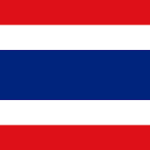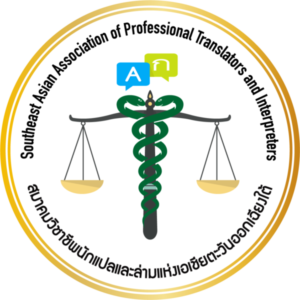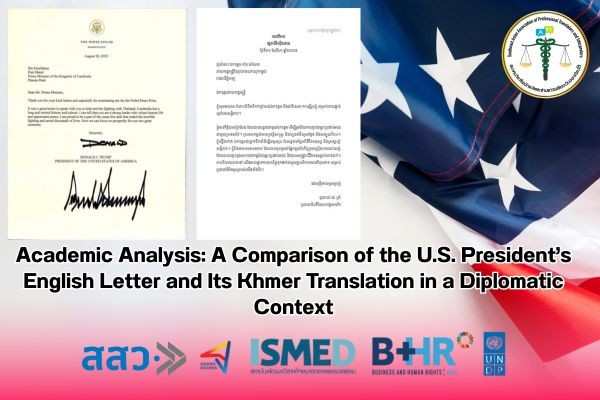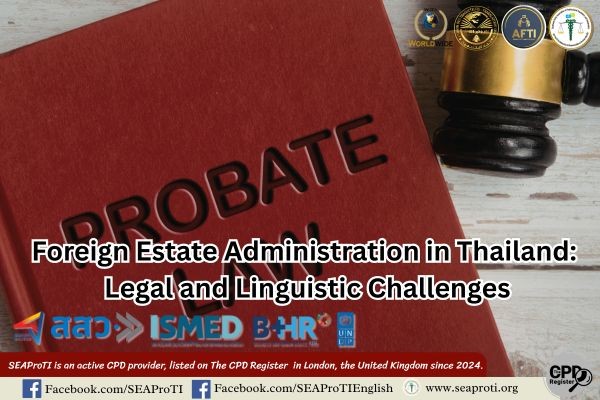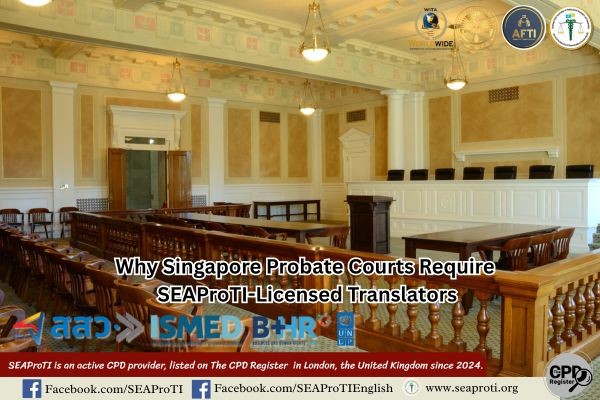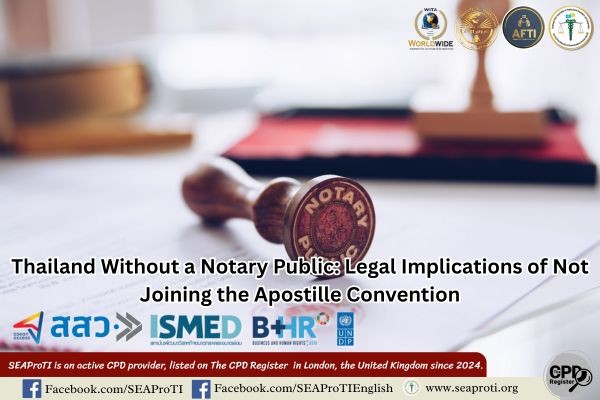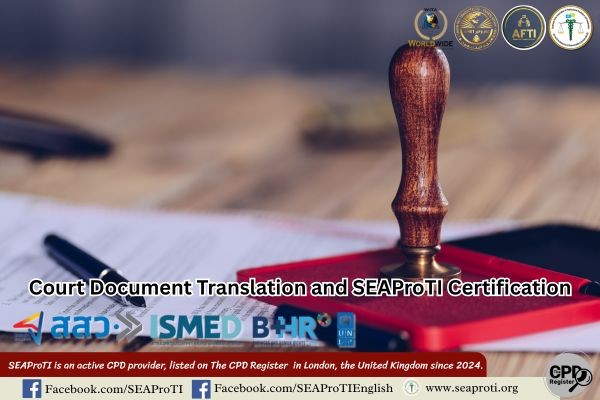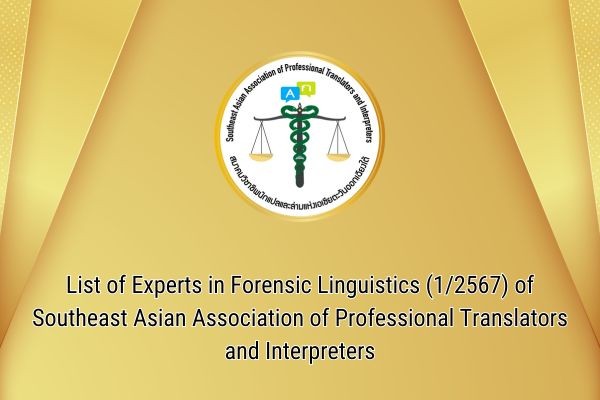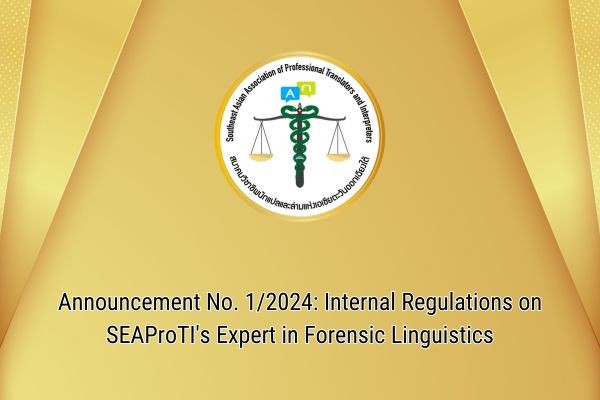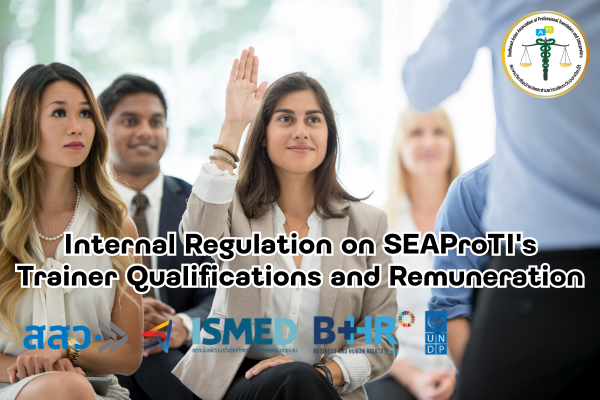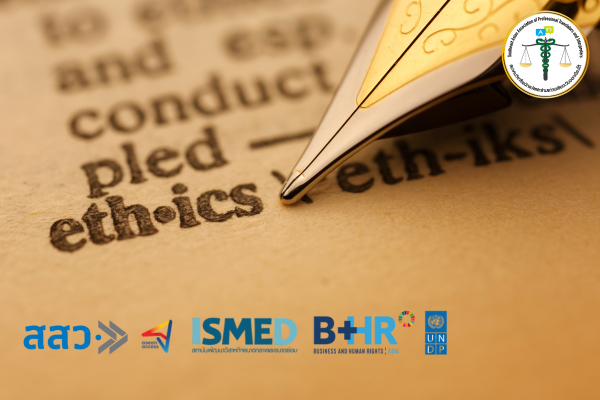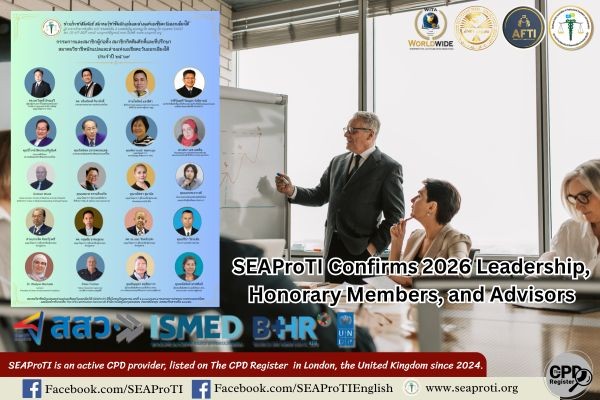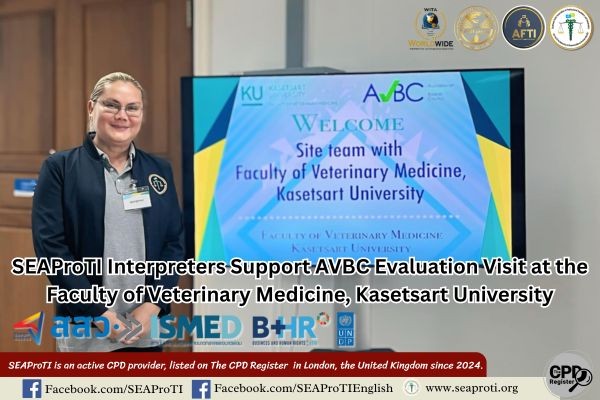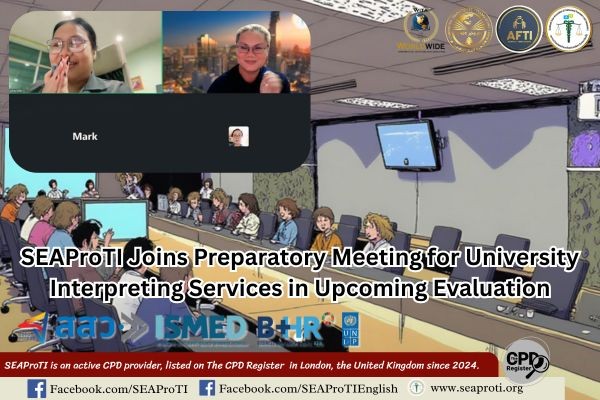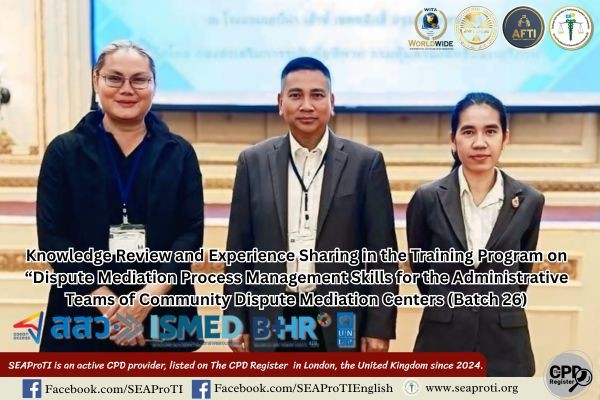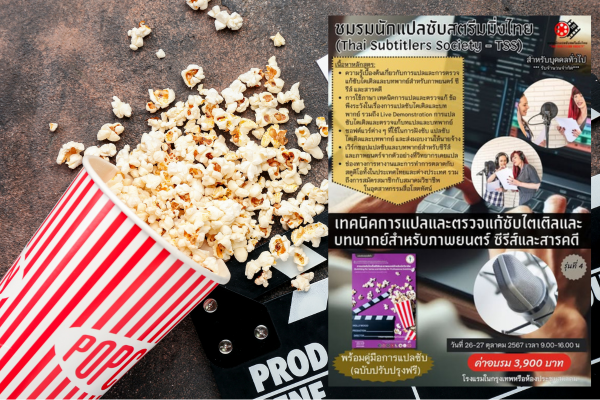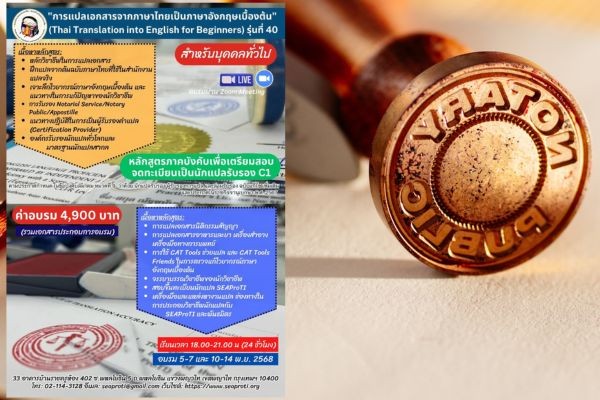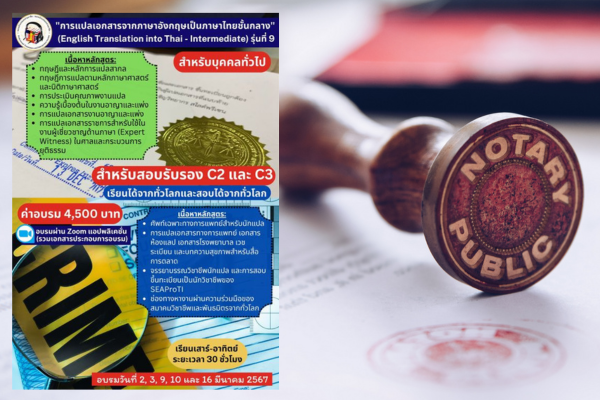Academic Analysis: A Comparison of the U.S. President’s English Letter and Its Khmer Translation in a Diplomatic Context
Author: Wanitcha Sumanat, president of the Southeast Asian Association of Professional Translators and Interpreters
27 August 2025, Bangkok – The translation of diplomatic documents is not merely a transfer of meaning from one language to another; it is a process of discursive negotiation that reflects cultural, political, and bilateral contexts (Venuti, 2017; Schäffner, 2012). A letter from the White House, dated August 20, 2025, in which President Donald J. Trump addressed Cambodian Prime Minister Hun Manet, serves as a clear case study. The English original and the Khmer translation demonstrate significant linguistic and discursive differences.
Characteristics of the English Original
The English letter is concise and direct, consisting of only four short paragraphs focusing on:
- Expressing gratitude for Hun Manet’s letters and the Nobel Peace Prize nomination.
- Praising Hun Manet as a “strong leader who values human life and appreciates peace.”
- Highlighting the role of the United States in the ceasefire agreement with Thailand.
- Concluding with the vision of “prosperity for our two great countries.”
The tone is one of personalized diplomacy, reflecting Trump’s characteristic self-assertion (Pennebaker & Chung, 2021). The emphasis falls more on Trump’s personal role in peace efforts than on bilateral relations per se.
Characteristics of the Khmer Translation
The Khmer version undergoes significant discursive adaptation. It is notably longer and framed in ceremonial diplomatic register (Chandler, 2008). Its features include:
- Honorific openings and closings, such as សូមអនុញ្ញាតបំផុត (“I respectfully request permission to state”), which emphasize deference.
- Expanded references to Cambodia’s history and culture, linking them to bilateral ties.
- Downplaying of Trump’s individual credit, replacing it with language stressing mutual respect and bilateral cooperation.
- Frequent use of formal diplomatic expressions such as ការជំរុញសន្តិភាព (“promotion of peace”).
Discursive Comparison
The following table summarizes the key differences:
| Aspect | English Original | Khmer Translation |
|---|---|---|
| Length | Concise (~180 words) | Extended (~300 words) |
| Tone | Personal, direct, self-focused | Ceremonial, formal, state-centered |
| Political Message | Trump-centered narrative of peace efforts | Emphasis on mutual respect and bilateral relations |
| Translation Strategy | Literal with self-credit | Adaptation & localization for diplomacy |
Thus, the Khmer version does not employ formal equivalence, but rather dynamic equivalence (Nida, 1964), privileging communicative effect over literal fidelity.
Political and Diplomatic Interpretation
The differences between the two versions highlight that translation in diplomacy functions as a strategic instrument rather than a purely linguistic act.
- United States (Trump) → The letter was framed to highlight Trump’s personal role in securing peace.
- Cambodia → The translation softened this “Trump-centric” emphasis, reframing the text around balanced bilateral relations and mutual cooperation.
In this sense, translation operates as a form of identity negotiation between states (Wadensjö, 1998).
Conclusion
This case study confirms that the translation of diplomatic correspondence is a form of discourse construction, rather than literal transfer. The divergence between the English original and the Khmer translation illustrates both the cultural-linguistic structures of the respective languages and the diplomatic strategies of the states involved. Understanding such translation strategies is crucial for scholarship in translation studies, diplomacy, and political linguistics.
References
- Chandler, D. (2008). A history of Cambodia (4th ed.). Westview Press.
- Nida, E. A. (1964). Toward a science of translating: With special reference to principles and procedures involved in Bible translating. Brill.
- Pennebaker, J. W., & Chung, C. K. (2021). The psychology of language and politics. Oxford University Press.
- Schäffner, C. (2012). Rethinking translatability: Translation as negotiation. Routledge.
- Venuti, L. (2017). The translator’s invisibility: A history of translation (2nd ed.). Routledge.
- Wadensjö, C. (1998). Interpreting as interaction. Longman.
About Certified Translators, Translation Certification Providers, and Certified Interpreters of SEAProTI
The Southeast Asian Association of Professional Translators and Interpreters (SEAProTI) has announced the criteria and qualifications for registration of Certified Translators, Translation Certification Providers, and Certified Interpreters of the Association. These criteria were published under Sections 9 and 10 of the Royal Thai Government Gazette, Secretariat of the Cabinet, Office of the Prime Minister, on 25 July 2024, Vol. 141, Part 66 Ng, p. 100. Full text available here: The Royal Thai Government Gazette
** The Office of the Council of State has proposed issuing a Royal Decree stipulating that registered translators—including certification providers from professional associations or accredited language training institutions—be legally empowered to certify translations (Letter to SEAProTI dated 28 April 2025).
*** SEAProTI is the first professional association in Thailand and Southeast Asia to establish a formal certification system for Certified Translators, Translation Certification Providers, and Certified Interpreters.
Headquarters: 33 Baan Rajakhru Building, Room 402, Soi Phahonyothin 5, Phahonyothin Road, Phayathai Sub-district, Phayathai District, Bangkok 10400, Thailand
Email: hello@seaproti.com Phone: (+66) 2-114-3128 (Office Hours: Monday–Friday, 09:00–17:00)
การวิเคราะห์เชิงวิชาการ: การเปรียบเทียบจดหมายภาษาอังกฤษของประธานาธิบดีสหรัฐฯ และฉบับแปลภาษาเขมรในบริบทการทูต
ผู้แต่ง วณิชชา สุมานัส นายกสมาคมวิชาชีพนักแปลและล่ามแห่งเอเชียตะวันออกเฉียงใต้
27 สิงหาคม 2568, กรุงเทพมหานคร – การแปลเอกสารทางการทูตไม่ใช่เพียงการถ่ายทอดความหมายจากภาษาหนึ่งไปสู่อีกภาษาหนึ่ง หากแต่เป็นการเจรจาต่อรองทางวาทกรรม (discursive negotiation) ที่สะท้อนบริบททางวัฒนธรรม การเมือง และความสัมพันธ์ระหว่างประเทศ (Venuti, 2017; Schäffner, 2012) จดหมายจาก ทำเนียบขาว ลงวันที่ 20 สิงหาคม 2025 ซึ่งประธานาธิบดีโดนัลด์ เจ. ทรัมป์ ส่งถึงสมเด็จอัครมหาเสนาบดีเดโช ฮุน มาเนต นายกรัฐมนตรีกัมพูชา ถือเป็นกรณีศึกษาที่ชัดเจน เนื่องจากต้นฉบับภาษาอังกฤษและฉบับแปลภาษาเขมรมีลักษณะทางภาษาและวาทกรรมที่แตกต่างกันอย่างมีนัยสำคัญ
ลักษณะของต้นฉบับภาษาอังกฤษ
ต้นฉบับภาษาอังกฤษมีลักษณะ concise and direct โดยสื่อสารอย่างตรงไปตรงมา มีเพียงสี่ย่อหน้าและเน้นข้อความสำคัญ ได้แก่
- การขอบคุณสำหรับจดหมายและการเสนอชื่อเข้าชิง รางวัลโนเบลสาขาสันติภาพ
- การชื่นชมผู้นำกัมพูชาว่าเป็น “strong leader who values human life and appreciates peace”
- การเน้นบทบาทของสหรัฐฯ ในการเป็นส่วนหนึ่งของข้อตกลงหยุดยิงกับไทย
- การลงท้ายด้วยเป้าหมายร่วมกันคือ prosperity for our two great countries
โทนภาษาเป็นลักษณะ personalized diplomacy ที่สะท้อนบุคลิกของทรัมป์ในเชิง self-assertion (Pennebaker & Chung, 2021) โดยมีการเน้นบทบาทส่วนตัวของผู้ส่งจดหมายมากกว่าความสัมพันธ์เชิงรัฐ
ลักษณะของฉบับภาษาเขมร
ฉบับภาษาเขมรมีการปรับเปลี่ยนเชิงวาทกรรมอย่างเห็นได้ชัด โดยมีความยาวมากกว่าต้นฉบับ และใช้โครงสร้างที่เป็นพิธีรีตองแบบการทูตกัมพูชา (Chandler, 2008) ลักษณะสำคัญ ได้แก่:
- การใช้คำขึ้นต้นและลงท้ายที่แสดงความเคารพอย่างสูง เช่น សូមអនុញ្ញាតបំផុត (ขออนุญาตกราบเรียน)
- การยกย่องประวัติศาสตร์และวัฒนธรรมกัมพูชา โดยผูกโยงเข้ากับความสัมพันธ์ทวิภาคี
- การลดการเน้นบทบาทส่วนตัวของประธานาธิบดีสหรัฐฯ และเปลี่ยนไปเน้น mutual respect และ bilateral cooperation
- การเพิ่มเนื้อหาที่สอดคล้องกับ วาทกรรมการทูตกัมพูชา เช่น “ការជំរុញសន្តិភាព” (การส่งเสริมสันติภาพ)
การเปรียบเทียบเชิงวาทกรรม
ตารางด้านล่างสรุปความแตกต่างหลัก:
| ประเด็น | ต้นฉบับภาษาอังกฤษ | ฉบับภาษาเขมร |
|---|---|---|
| ความยาว | กระชับ สั้น (≈180 คำ) | ยาวขึ้น เพิ่มรายละเอียด (≈300 คำ) |
| โทนภาษา | ส่วนบุคคล เชิงตรงไปตรงมา | พิธีรีตองสูง เน้นความสัมพันธ์ทางการ |
| การสื่อสารการเมือง | เน้นบทบาทส่วนตัวของทรัมป์ | เน้นความร่วมมือระดับรัฐ |
| กลยุทธ์การแปล | Literal with self-credit | Adaptation & localization for diplomacy |
กล่าวได้ว่าฉบับภาษาเขมรไม่ใช่การแปลแบบ formal equivalence แต่เป็นการแปลแบบ dynamic equivalence (Nida, 1964) โดยเน้นผลลัพธ์ของการสื่อสารมากกว่าความตรงตัวของข้อความ
การตีความเชิงการเมืองและการทูต
ความแตกต่างระหว่างสองฉบับสะท้อนให้เห็นว่า การแปลในบริบทการทูตเป็นเครื่องมือเชิงยุทธศาสตร์ (strategic instrument) ไม่ใช่เพียงกระบวนการทางภาษา ตัวอย่างนี้แสดงว่า:
- สหรัฐอเมริกา (Trump) → ใช้จดหมายเพื่อเน้นบทบาทผู้นำในเวทีสันติภาพ
- กัมพูชา → ปรับข้อความให้สอดคล้องกับวัฒนธรรมการสื่อสารของตน และลดความเป็น “Trump-centric” ลง เพื่อเน้นความสัมพันธ์ทวิภาคีที่มีความสมดุล
การแปลจึงทำหน้าที่เป็น การเจรจาเชิงอัตลักษณ์ (identity negotiation) ระหว่างสองรัฐ (Wadensjö, 1998)
บทสรุป
กรณีศึกษานี้ตอกย้ำว่า การแปลเอกสารทางการทูตเป็นการสร้างวาทกรรม (discourse construction) มากกว่าการถ่ายทอดภาษาตรงตัว ความแตกต่างระหว่างต้นฉบับภาษาอังกฤษและฉบับภาษาเขมรสะท้อนทั้งโครงสร้างทางวัฒนธรรมของภาษา และการเมืองการทูตที่มุ่งเน้นการคงไว้ซึ่งเกียรติยศและความสัมพันธ์ระหว่างประเทศ การทำความเข้าใจกลยุทธ์การแปลลักษณะนี้จึงมีความสำคัญต่อการศึกษาด้านการแปล การทูต และภาษาศาสตร์การเมือง
เอกสารอ้างอิง
- Chandler, D. (2008). A history of Cambodia (4th ed.). Westview Press.
- Nida, E. A. (1964). Toward a science of translating: With special reference to principles and procedures involved in Bible translating. Brill.
- Pennebaker, J. W., & Chung, C. K. (2021). The psychology of language and politics. Oxford University Press.
- Schäffner, C. (2012). Rethinking translatability: Translation as negotiation. Routledge.
- Venuti, L. (2017). The translator’s invisibility: A history of translation (2nd ed.). Routledge.
- Wadensjö, C. (1998). Interpreting as interaction. Longman.
เกี่ยวกับนักแปลรับรอง ผู้รับรองการแปล และล่ามรับรองของสมาคมวิชาชีพนักแปลและล่ามแห่งเอเชียตะวันออกเฉียงใต้
* สมาคมวิชาชีพนักแปลและล่ามแห่งเอเชียตะวันออกเฉียงใต้ (SEAProTI) ได้ประกาศหลักเกณฑ์และคุณสมบัติผู้ที่ขึ้นทะเบียนเป็น “นักแปลรับรอง (Certified Translators) และผู้รับรองการแปล (Translation Certification Providers) และล่ามรับรอง (Certified Interpreters)” ของสมาคม หมวดที่ 9 และหมวดที่ 10 ในราชกิจจานุเบกษา ของสำนักเลขาธิการคณะรัฐมนตรี ในสำนักนายกรัฐมนตรี แห่งราชอาณาจักรไทย ลงวันที่ 25 ก.ค. 2567 เล่มที่ 141 ตอนที่ 66 ง หน้า 100 อ่านฉบับเต็มได้ที่: นักแปลรับรอง ผู้รับรองการแปล และล่ามรับรอง
** สำนักคณะกรรมการกฤษฎีกาเสนอให้ตราเป็นพระราชกฤษฎีกา โดยกำหนดให้นักแปลที่ขึ้นทะเบียน รวมถึงผู้รับรองการแปลจากสมาคมวิชาชีพหรือสถาบันสอนภาษาที่มีการอบรมและขึ้นทะเบียน สามารถรับรองคำแปลได้ (จดหมายถึงสมาคม SEAProTI ลงวันที่ 28 เม.ย. 2568)
*** สมาคมวิชาชีพนักแปลและล่ามแห่งเอเชียตะวันออกเฉียงใต้ เป็นสมาคมวิชาชีพแห่งแรกในประเทศไทยและภูมิภาคเอเชียตะวันออกเฉียงใต้ที่มีระบบรับรองนักแปลรับรอง ผู้รับรองการแปล และล่ามรับรอง
สำนักงานใหญ่: อาคารบ้านราชครู เลขที่ 33 ห้อง 402 ซอยพหลโยธิน 5 ถนนพหลโยธิน แขวงพญาไท เขตพญาไท กรุงเทพมหานคร 10400 ประเทศไทย
อีเมล: hello@seaproti.com โทรศัพท์: (+66) 2-114-3128 (เวลาทำการ: วันจันทร์–วันศุกร์ เวลา 09.00–17.00 น.)
